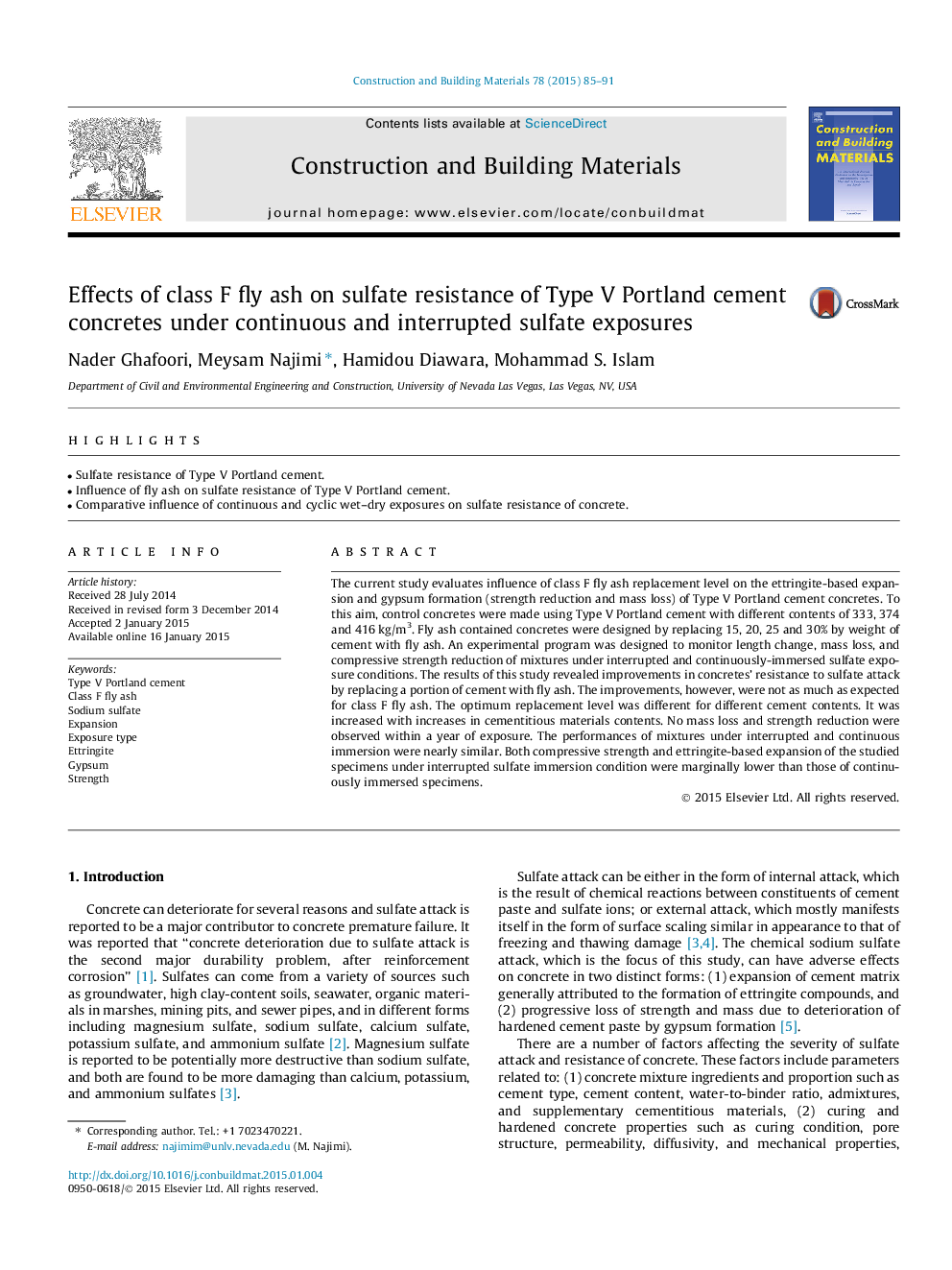| Article ID | Journal | Published Year | Pages | File Type |
|---|---|---|---|---|
| 257096 | Construction and Building Materials | 2015 | 7 Pages |
•Sulfate resistance of Type V Portland cement.•Influence of fly ash on sulfate resistance of Type V Portland cement.•Comparative influence of continuous and cyclic wet–dry exposures on sulfate resistance of concrete.
The current study evaluates influence of class F fly ash replacement level on the ettringite-based expansion and gypsum formation (strength reduction and mass loss) of Type V Portland cement concretes. To this aim, control concretes were made using Type V Portland cement with different contents of 333, 374 and 416 kg/m3. Fly ash contained concretes were designed by replacing 15, 20, 25 and 30% by weight of cement with fly ash. An experimental program was designed to monitor length change, mass loss, and compressive strength reduction of mixtures under interrupted and continuously-immersed sulfate exposure conditions. The results of this study revealed improvements in concretes’ resistance to sulfate attack by replacing a portion of cement with fly ash. The improvements, however, were not as much as expected for class F fly ash. The optimum replacement level was different for different cement contents. It was increased with increases in cementitious materials contents. No mass loss and strength reduction were observed within a year of exposure. The performances of mixtures under interrupted and continuous immersion were nearly similar. Both compressive strength and ettringite-based expansion of the studied specimens under interrupted sulfate immersion condition were marginally lower than those of continuously immersed specimens.
